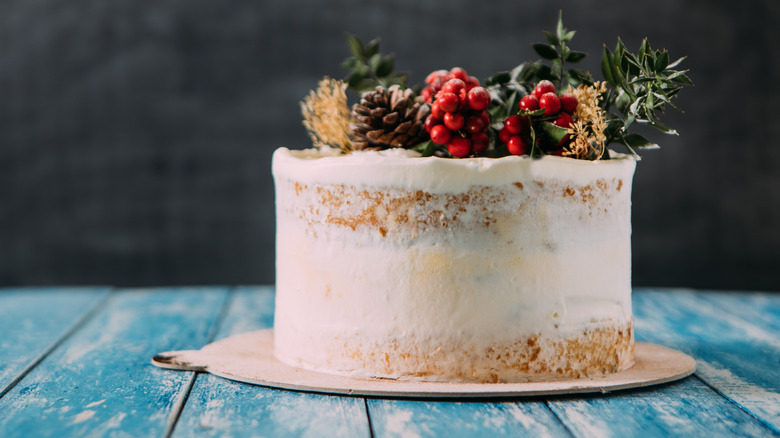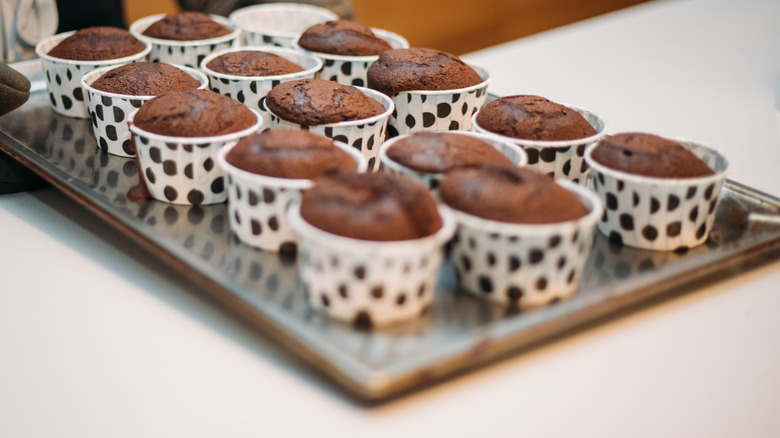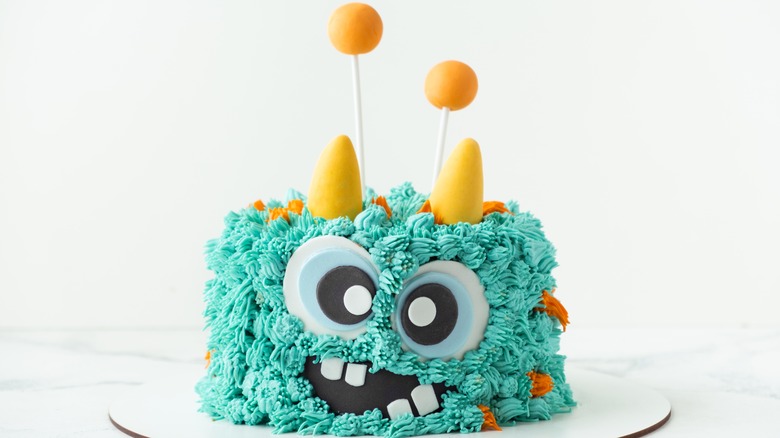The Vital Step You Can't Miss For Mess-Free Cake Decorating
A cake is the ultimate way to celebrate any occasion, to bring to a friend's house, for a holiday treat, or to end the perfect meal. You can also make cake baking your side hustle if you know a few things about how to decorate. Baking a cake is more manageable than it seems if you remember one essential step for mess-free cake decorating: wrap and chill. If you wrap and chill a cake (or cupcakes) properly before frosting, you're halfway to making a memorable cake.
Wrapping cakes tightly with plastic wrap and popping them in the fridge as soon as you can move them (even if they're still a bit warm) will ensure a moist and delicious cake. More importantly, frosting a frozen cake is much simpler than trying to frost a warm cake.
There are a few ways to go about the vital cake-making step of wrapping and chilling, and all are equally effective.
Warm or cool is the question
There's some debate in the baking world about whether or not to wrap a hot cake. Older cookbooks often state that covering a cooled cake is the best method, but wrapping a warm cake has some solid science behind it.
Wrapping cake in plastic wrap when it's warm traps moisture, preventing it from becoming too dry. To test this method, let the cake layers cool until warm to the touch (don't remove them from the pans).
Once they're warm, wrap all of the layers (and the pans) in plastic wrap and put them in the freezer until you're ready to add the crumb coat (if you're in a rush, you can do this in an hour). You can also wait until your cakes cool to freeze them, but you may have to add a simple syrup to the layers to ensure a moist crumb.
How long can cakes stay frozen?
Most bakers split their weekly schedule into a few days, including one "bake day." This day is reserved for baking all cake and cupcake orders and freezing them. It's safe to leave tightly wrapped cake layers in the freezer for a few months; some bakers have basic cake bases pre-made and frozen in case of a last-minute order.
If you want to put cake layers in the fridge, the preservation time is shorter, with one week being the max. Frosting can also be frozen. Fondant can be frozen, but it will "sweat" when removed from the freezer, so make sure to place any defrosted fondant cakes in the fridge unwrapped at least a day before serving.
Any way you slice it, cake layers should be wrapped and chilled before frosting. And don't forget the essential crumb coat (a first coat of frosting that covers the cake before the real piping begins).


